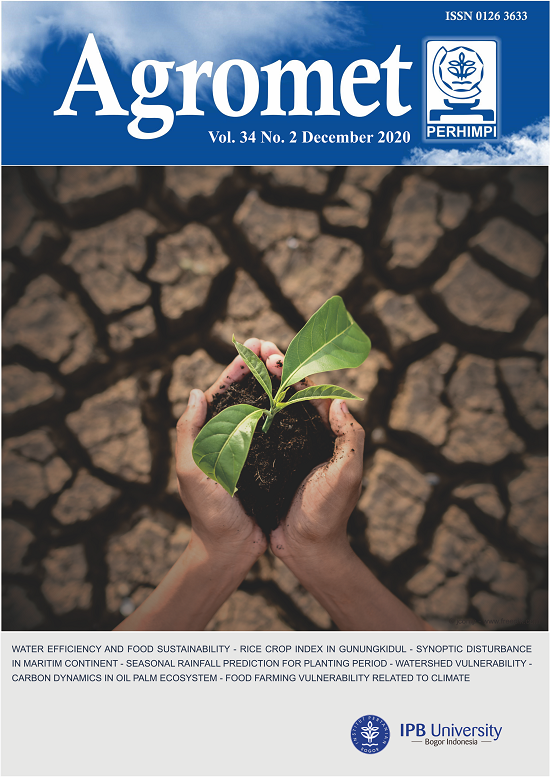The Use of SST Anomaly to Predict Seasonal Rainfall during the Second Planting Period in the Tanoh Abee Irrigation Area, Aceh Besar
Abstract
Irrigation in Tanoh Abee is used for agricultural activities especially during the second planting season during dry season. However, the availability of irrigation water is controlled by total rainfall received. An accurate prediction of rainfall, which traditionally used “keneunong” local wisdom, is urgently required. The objective of the study is to obtain the best predictor of seasonal rainfall based on the Pacific sea surface temperature (SST) anomaly and the monthly lead time of prediction. We employed monthly rainfall from six stations surrounding the study area and combined with principal component analysis to eliminate rainfall autocorrelation. Seasonal rainfall (quarterly average) was calculated from monthly data. The results showed that 1-month lead time strongly correlated to seasonal rainfall in Tanoh Abee (r<-0.7, α=5%) for the second planting period. On other hand, the 2-month and 3-month lead time were useful to predict seasonal rainfall in March-April-May (MAM) only. For April-May-June (AMJ) and May-June-July (MJJ), the correlation between SST anomaly and seasonal rainfall was weak. This finding indicated that the accuracy of prediction decreases with the longer lead time. Based on our analysis, coordinates of 170° E – 175° E; 5° N - 5° S in Niño 4 region have strongly correlated with seasonal rainfall in MAM, AMJ, and MJJ periods. Moreover, further research is necessary to combine any approaches that will improve our prediction skill for another 2- or 3-month lead time.
Authors

This work is licensed under a Creative Commons Attribution-NonCommercial 4.0 International License.

